STAY FIT WHILE AT HOME
01/12/2021 Views : 284
Made Hendra Satria Nugraha
The COVID-19 pandemic has forced every human being to maintain health protocols, one of which is to keep a distance and stay away from crowds. Under these conditions, the process of learning and working that originally took place in the office has turned into a work from home scheme. In this scheme, a person can become vulnerable to de-training conditions and experience decreased levels of physical activity. On the other hand, maintaining physical activity can help us to stay in shape. Then, what should we do to maintain physical fitness, while at home?
One of them is to maintain the level of activity itself and do fitness training independently at home. Of course, before entering into the discussion of physical training, it helps us to know in advance what to pay attention to before starting to do this physical activity.
The COVID-19 pandemic has forced every human being to maintain health protocols, one of which is to keep a distance and stay away from crowds. Under these conditions, the process of learning and working that originally took place in the office has turned into a work from home scheme. In this scheme, a person can become vulnerable to de-training conditions and experience decreased levels of physical activity. On the other hand, maintaining physical activity can help us to stay in shape. Then, what should we do to maintain physical fitness, while at home?
1. Fitness measurement
Before doing any training/exercise, it is recommended that you do some standard physical fitness tests to determine the condition of your body before doing the training. The recommended standard physical fitness test consists of, 3 components: (1) body composition, (2) physical capacity, and (3) neuromuscular function.
Body composition can be measured through weight, body mass index, percentage of total fat, muscle mass, and waist circumference (waist to hip ratio). Physical capacity can be measured through the Bruce protocol to determine cardiovascular fitness. And neuromuscular function is used to determine the analysis of stepping/walking and a person's balance. One of the tests that can be done is the stock stand test.
In addition, the American College of Sports Medicine classifies individuals into 3 risk categories when exercising, namely low risk, moderate risk, and severe risk based on cardiovascular disease risk factors. The risk factors in question include: age (≥ 45 years for men and 55 years for women), history of sudden death from heart disease in family history (< 55 years in father and <65 years in mother), history of smoking in the family. Last 6 months, sedentary lifestyle (not participating in moderate activity for 30 minutes, 3 times a week, in the last 3 months), obesity, hypertension, dyslipidemia, and pre-diabetes.
A person is said to have low risk if there are no signs & symptoms of cardiovascular disease and only has 1 of the risk factors previously mentioned. A person is said to be at moderate risk if there are no signs & symptoms of cardiovascular disease and only has 2 of the risk factors previously mentioned. And a person is said to have a severe/major risk if a person has been diagnosed with cardiovascular disease, respiration, or metabolic disease or someone who experiences 1 or more of the signs & symptoms of cardiovascular disease.
Before doing any training/exercise, it
is advisable to consult a certified doctor/health worker/fitness training so
that the training/exercise that is carried out is according to your body's
needs and provides good benefits.
2. Training Dosage
It is recommended that training/sports follow the FITT principles. What is FITT? FITT consists of: frequency, intensity (intensity), time, and type. The first is Frequency. Frequency is a state of how often a person does training. Training is recommended to be carried out 3-4 times per week with intervals/rest breaks in each session. This means that if you train on Monday, it is recommended to rest day / rest on Tuesday, and continue training on Wednesday. It also depends on the intensity of the training, the time, and the type of type of training you are training.
Then the second is intensity. This intensity is related to the level of effort of the body in carrying out certain activities. Intensity in training is generally divided into 2, namely aerobic components and weight training.
The recommended aerobic component is 40-60% heart rate reserve (heart rate reserve). HRR = maximum HR – resting HR. Maximum HR = 220 – age. If you are 30 years old, then your maximum HR is 220 – 30 = 190 beats/minute. Then for normal resting HR, it ranges from 60 – 100 beats/minute (we estimate your normal resting HR is 80 beats/minute). So, HRR = 190 – 80 = 110 beats/minute.
After knowing the HRR value, we can calculate the recommended percentage of aerobic exercise intensity, which is (40 – 60% HRR) + resting HR. If the intensity is 40-60% HRR, the maximum pulse rate when exercising is recommended to be between 76-114 beats/minute.
Then the second is the intensity component of weight training. The recommended weight training intensity is from 60 – 80% 1 Repetition Maximum (RM). What is 1 repetition maximum? 1 repetition maximum is the maximum load that a person can lift in 1 attempt (maximum repetition).
There are various ways to calculate 1 RM. One example is using dumbbells to calculate 1 RM in the biceps. If a person is only able to lift a 10 kg dumbbell once on one of his biceps, then 10 kg becomes a burden of 1 RM on his biceps. So, if you are going to do weight training, with the recommended intensity of 60-80% 1RM, the load used ranges from 6-8 kg. In addition, weight training is performed in 2 – 3 sets with 8 – 10 reps in each set.
That was the explanation about frequency
and intensity. Now, we move on to an explanation of the time/duration when
exercising and what types of exercise can be done. For the duration when
exercising can range from 20 minutes – 1 hour, with a total recommended
duration of 30 – 60 minutes in each session. Regarding the type of sport, there
are many types of sports that can be done. In the type of aerobic component,
the types of exercise that can be done are: running, leisurely walking,
swimming, aerobics/gymnastics classes, and also cycling. Meanwhile, weight
training can come from the person's own body weight or use tools such as
cables/resistance bands or dumbbells & barbells.
3. Training Type
In the conditions of the Covid-19 pandemic, of course, physical activity and interaction between individuals will be limited because they must comply with existing health protocols. However, don't let this health protocol be an excuse for you not to exercise. Because this sport has a myriad of benefits, one of which can maintain the body's immune level. With a note, if done in accordance with the recommended training dose.
Then, what kind of training can you do
while at home? Here we will explain accompanied by a guide through the
instructor. Don't forget to practice it together!
Each training is recommended to consist of
3 main components, namely: (1) warm-up, (2) core training, and (3) cool-down.
Warming up is done for 5 minutes by stretching the muscles in the upper and
lower extremities. Stretching is done actively with a count of 8-10 times.
Then followed by core training for 30 minutes. This core training can be done aerobically or involve weight training, or it can be combined together. After that, the training ended with a cool down for 5 minutes by stretching the muscles in the upper and lower extremities. Stretching is done actively with a count of 8-10 times.
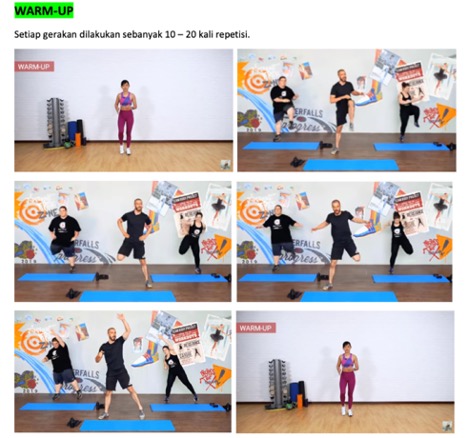
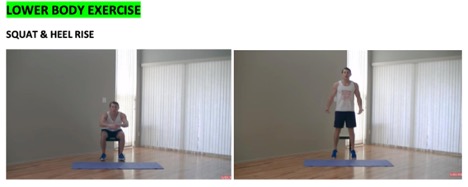
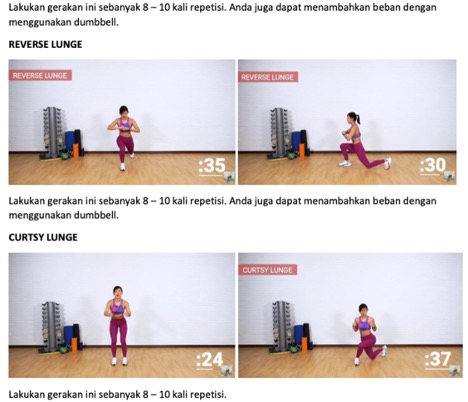
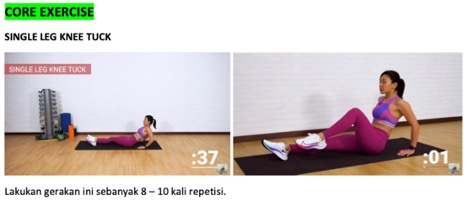
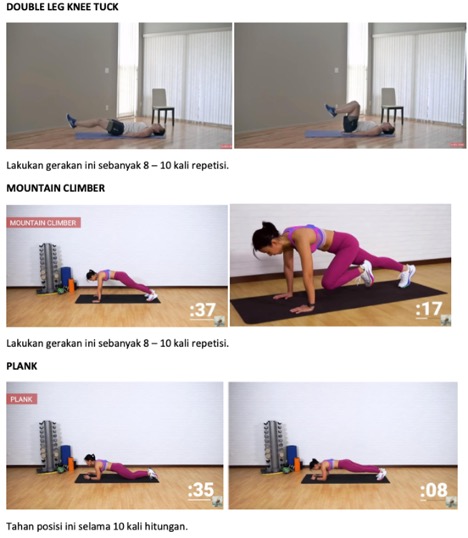
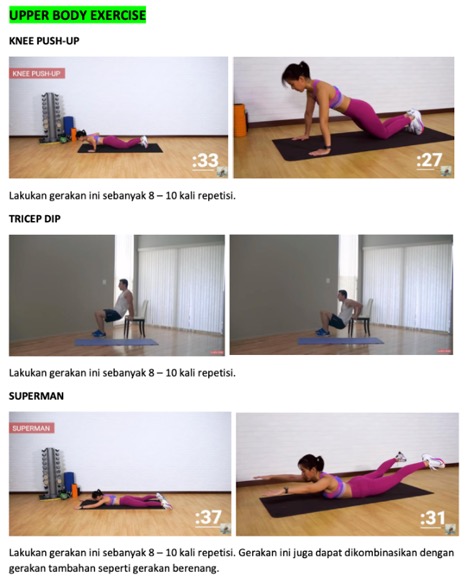
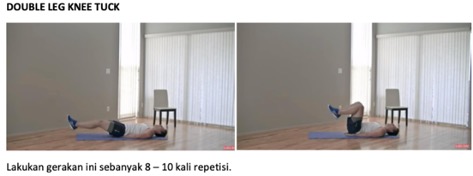
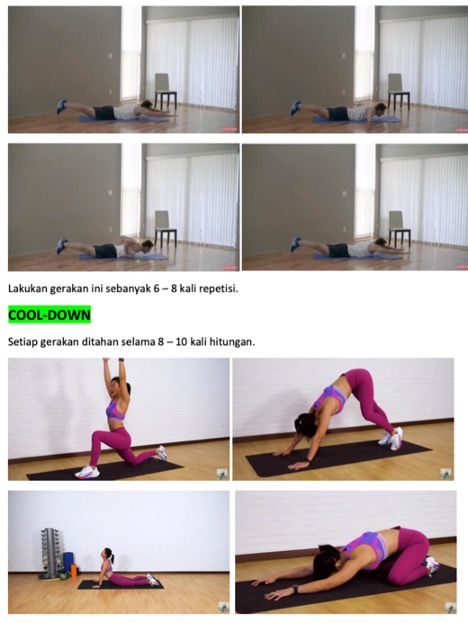
References:
1. American College of Sports Medicine. 2010. ACSM's guidelines for exercise testing and prescription. Philadelphia :Lippincott Williams & Wilkins
2. Adiatmika IPG & Santika IGPNA. 2016. Bahan Ajar Tes dan Pengukuran Olahraga. Denpasar: Udayana University Press
3. Video Link: Warm-up: https://www.youtube.com/watch?v=gC_L9qAHVJ8
4. Video Link: Pelatihan inti: https://www.youtube.com/watch?v=g_CttGc-_2E
5. Video Link: https://www.youtube.com/watch?v=_W9B2ffnO5c
